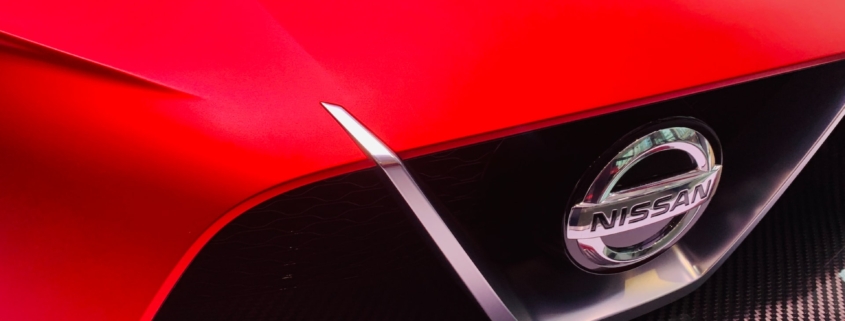Lincoln Channels 1989 Infiniti Debut
Once upon a time, someone at Ford Motor Company may have known what the Lincoln brand stood for in the customer’s mind. But, that was then. Over the years, defining Lincoln has been a challenge. In 2019, Lincoln decided the brand would be American Luxury. That was an undefined title. It was left to the potential customer to fill in the blanks. Today, American Luxury is Sanctuary, as in a refuge or a sacred place.
Cars are for driving. It is wonderful to drive a car that is luxurious on the inside. It is wonderful to drive a car that is quiet inside, shutting out all of the street and highway noise. It is wonderful to drive a car that has all the appurtenances of class and status. These are benefits – functional, emotional and social – that we may look for in a vehicle.
But Lincoln does not tell us about these benefits. Lincoln as Sanctuary is left up to the customer to imagine. A brand must own a promise. A brand must have a relevant, differentiated promise that is created by the brand owners. A brand promise relevantly differentiates a brand from competition. Vague Sanctuary can easily be understood as a benefit of a competitor, Lexus, for example. The brand promise describes the relevantly differentiated experience that customers can expect time after time.
Brands that have opted for letting the customer decide what the brand stands for tend to regret that stance.
Take Infiniti.
In 1999, Nissan began advertising its new luxury vehicle, Infiniti. The ad campaign was gorgeous photography of the car in the woods. The lighting was exquisite. The door handles were remarkable. The feeling was one of, well, sanctuary. There were no words about the benefits of the vehicle. There was just the beauty of the design in a beautiful setting.
At the same time, Toyota’s new luxury vehicle, Lexus, was also introducing itself to the American public. Unlike Infiniti, Lexus focused on the vehicle’s sanctuary-like ride. One of the ads showed champagne classes on the car’s roof never wavering even over a rough road. Another referenced its quiet interior.
For all of the amazing market research at Infiniti, its lack of focus on the actual benefits of driving an Infiniti put the brand at a deficit relative to Lexus. Lexus took off; Infiniti languished. At one point, almost a decade later, there was consideration given to eliminating the brand.
Back to Ford Motor Company, owner of Lincoln.
In the mid-2000’s, Ford Motor Company created a campaign for Mercury – the now defunct brand, a relative of Lincoln. You bought your Mercury at the Lincoln-Mercury dealership. Ford was not able to articulate what exactly Mercury stood for… so in its campaign, the tag line was “Imagine Yourself In a Mercury.” If Ford could not tell you what Mercury was, at least you might be able to create some fantasy. Mercury faded away into automotive history. People may have loved the vehicle, but not even Ford could articulate what Mercury stood for in the customer’s mind.
Why is this history important?
With the current Lincoln campaign, Ford is channeling the same approach as Infiniti and Mercury. Let the customer imagine what driving a Lincoln is like based on beautiful photography, serene-hip music and lofty, resounding, yet amorphous wording. Sanctuary sounds wonderful.
For example, we hear:
The legacy continues. Innovative design is in our nature, and we can’t wait for the road ahead
We’ve shaped one century. Let’s define the next.
The power of sanctuary…
Here is a truism. You know a brand has no idea what it stands for when the words, “the power of…” are used. It is one of those catch-all phrases that ad people use when ideas escape them.
So, what is a Lincoln? A visit to the Lincoln website tells us that the power of sanctuary is elevated peace while driving. The definition ends there. It is up to you to imagine just what peace-while-driving is all about. There is a heavy focus on peripheral services called membership such as Lincoln Access Rewards, Lincoln Access Rewards Visa Card, Travel Benefits, Roadside Assistance, Concierge, Insurance. There is an app – Lincoln Way App – and pick-up/delivery for service visits.
But what about the vehicle? How does it drive? What exactly is a peaceful interior experience? Are small children part of this peacefulness?
Does this mean that the cars themselves are not unique? Does this mean that because designers and marketers could not articulate the Lincoln brand essence they decided to focus on non-vehicle services? Does a focus on the inside of the vehicle mean that the actual vehicle itself delivers benefits and features that are not relevantly differentiated from competitors?
Features can be copied. A relevant, differentiating brand definition can be owned. Brand features are the key service and product elements that make the brand promise credible. But what is the brand promise?
Lincoln’s provenance is a business built on quiet, honest, affordable classic beauty. There was no ostentation. Originally, the Lincoln vehicles were practical prestige with luxurious functionality. Although its drivers appreciated the cachet and status, they did not want to feel embarrassed or guilty while on the road. With subtle, classic elegance and a contoured grace, these affordable luxury vehicles were impressive and distinct.
Somehow, in today’s world, this provenance is missing in Lincoln’s brand articulation. There is no reference to Lincoln’s classic beauty expressed in a contemporary manner either in its public design description or in its articulation of its reason for being. Leaving the brand promise up to the imagination of the customer creates a brand that has multiple, individual meanings. Hoping that this approach will rev the engine of enduring profitable growth in a highly competitive marketplace is a lot of gas.



